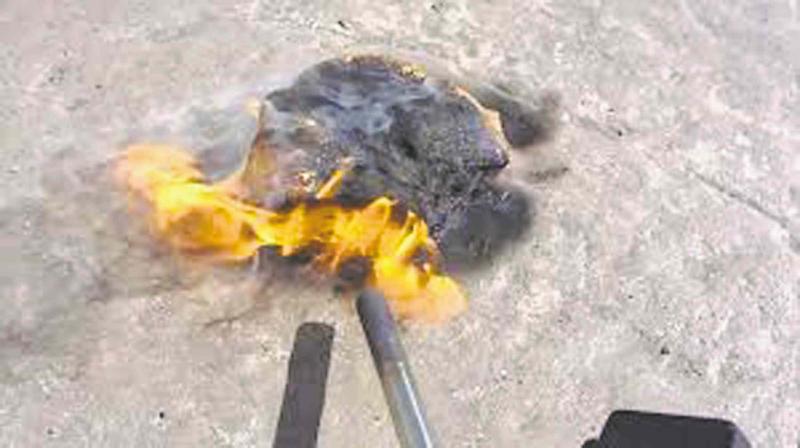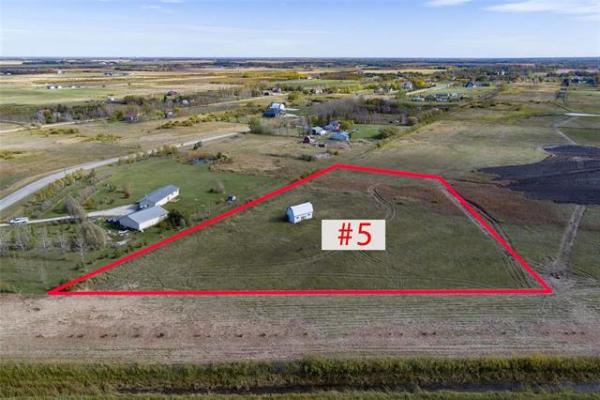As winter approaches it's a good time to consider the flammability and toxicity of the materials we use to keep our homes warm.
Fibreglass batts are the most commonly used form of insulation for new builds, additions and small renovations in North America. Aside from being a skin irritan this cotton-candy-like spun glass insulation is given a high fire code rating because manufacturers claim it will melt at high temperatures without igniting. This, however, is only partly true because most fibreglass batts are held together with a petroleum-based adhesive that will catch fire. Also, batts with a paper-backing vapour barrier can still be found in homes built up until the late 1960s. The paper was not treated with a fire retardant and is very flammable.
Roxul or mineral wool batts composed of spun volcanic rock and slag (a by-product of the steel and copper industry) will not burn. If you doubt this, take a piece of Roxul and expose its surface to a propane torch flame. After several hours, the rock wool will have a black area on its surface but show no signs of combustion. For this reason and the fact that it will not wick up water like fibreglass, Roxul has become popular as a cost-effective alternative to fibreglass.
Pour-in or blow-in cellulose, consisting of newspaper or other recycled materials treated with borate and/or ammonium sulfate fire retardants, is a relatively low-priced product that can easily be installed by a DYIer. It is surprisingly fire resistant, smouldering rather than bursting into flame; in fact, it is rated as a Class-A product, meaning it does not need to be covered by an approved thermal barrier such as gyproc. One con is that it can be difficult to locate the area in an attic or wall where the insulation is smouldering because the combustion process produces a small amount of smoke and no visible flame. The only clue as to the source is the smell of burning cellulose.
A form of insulation used extensively as a covering on the exterior of houses is vinyl siding combined with rigid foam insulation. This is a cost-effective product for adding finished cladding to your home and also increases its R-value. Unfortunately, vinyl siding will "burn like gasoline once a house fire gets started," according to a former Winnipeg Fire Paramedic Service captain. Moreover, toxic chemicals released by blazing vinyl and foam insulation include carcinogenic dioxin as well as hydrochloric acid (known as acid smoke), which kills people by burning their lungs before carbon monoxide or excessive heat takes their lives.
There are three basic rigid foam board insulations: expanded polystyrene foam (often called bead-board), extruded polystyrene foam and polyisocyanurate (polyiso for short). For the most part, they do not require vapour barrier because they are naturally impermeable.
Bead-board is the least expensive with the lowest R-value of 31/2 to four per inch of thickness. It is used to insulate interior basement and exterior outside walls, however, most renovators and DIYers prefer extruded polystyrene because it has a higher R-value of five per inch. Though a little more expensive, extruded polystyrene is a better air barrier and easier to work with than crumbly bead-board. Polysio is the most costly, but it has an R-value of eight per inch and is often covered with a foil to reflect radiant heat. All of these polymer panels are required by code to be covered with an approved thermal barrier because they are flammable, though some include a fire retardant. When ignited, they can emit mercury, styrene gas, dioxins, furans and other toxic substances that work their way into the ecosystem.
Spray foams are considered the most effective forms of insulation because of high R-values of about seven per inch and their ability to expand and seal the smallest air leaks. The most commonly used spray foams are closed cell polyurethanes and expanded polystyrenes. Modern polyurethanes and polystyrenes no longer contain or release formaldehyde when sprayed or during off-gassing. However, if not treated with a fire retardant they are considered a fire accelerant as they are made of petroleum derivatives. For this reason, building codes demand that all foam insulations contain a chemical that retards combustion. This is both good and bad because burning spray foams release isocyanates, carbon monoxide and dioxide, nitrogen oxides and hydrogen cyanide, as well toxins from the fire retardant. They normally do not require a vapour barrier, but a fire-resistant finish must be installed over them. An improperly mixed ratio of the two main chemicals can cause overheating, with the potential to start a fire. Also, the blowing agents for many spray foams are hydrochlorofluorocarbons (HCFCs) which are related to chlorofluorocarbons (CFCs), greenhouse gasses banned because of their propensity to damage the ozone layer. HCFCs, though considered a lesser threat to ozone destruction, are slowly being phased out in developed countries.
Phenolic foam is a product currently used extensively in Europe and Asia that, to my knowledge, has not been available in North America since the 1990s. This high R-value insulation requires no HCFC blow-out, has low flame spread, limited smoke generation and low toxic gas emissions (mainly carbon monoxide and dioxide). On the down side, it contains residual formaldehyde, is corrosive to iron and steel and is prone to water absorption, reducing thermal resistance. However, if my house were on fire, I would prefer it contained insulation with the properties of phenolic foam for human and environmental safety reasons. Perhaps it will make a comeback, with the corrosion and moisture problems solved.
If you have questions about insulation, fire prevention and safety, call the City of Winnipeg fire prevention office at 204-986-8200.
Davidsquare81@yahoo.com




